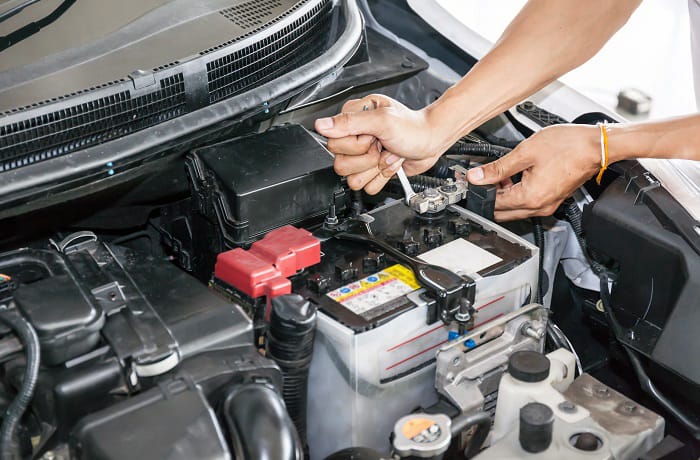How To Bypass O2 Sensor
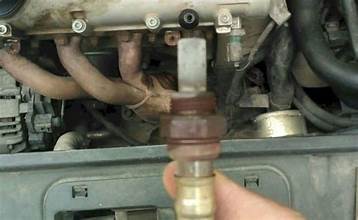
It can be intimidating to delve into the intricate world of auto mechanics, but gaining access to its insider knowledge can lead to crucial execution lifts and financial investments. One such secret is the Bypass O2 Sensor sidestep, which is shrouded in technical jargon and electrical complexity. Determining how to get around an O2 sensor can lead to a variety of possible outcomes, whether you’re a well-prepared gearhead hoping to crush every ounce of force from your motor or an inquisitive Do-It-Yourself enthusiast eager to handle another test.
Seize our all-inclusive assistance as we unravel the tactics, advantages, and crucial considerations for Bypass O2 Sensor, ensuring that your car operates as intended while you acquire a deeper understanding of its internal workings.
How Can You Bypass the O2 Sensor Like an Expert?
Clearly Stated Answer: Using a resistor to mimic the sensor’s sign is one way to bypass an O2 sensor and trick the ECU (Motor Control Unit) into believing the sensor is functioning correctly. This method is commonly employed to prevent a check motor light from occurring as a result of an faulty O2 sensor. However, it’s important to remember that evading an O2 sensor is illegal in many places and can result in increased outflows and possibly cause injury to the motor system.
Understanding the Function of the Oxygen Sensor
The oxygen sensor, also referred to as the O2 sensor, plays a fundamental role in the discharges control system of your car. It is responsible for monitoring the amount of oxygen in the exhaust gases and providing the ECU with this information. At that point, theECU modifies the air-fuel mixture to ensure proper ignition and reduce hazardous outflows. O2 sensors have the potential to fade or become less accurate over time, which could result in poor motor performance, decreased environmental friendliness, and a diligent check motor light. “O2 sensor sidestep,” “O2 sensor test system,” “check motor light fix,” and “O2 sensor erase” are a few popular expressions associated with O2 sensors.
Consequences of a Poor O2 Sensor
Recognizing the symptoms of a failing O2 sensor will help you solve the problem as soon as possible. Unpleasant standing by, poor efficiency, dark smoke from the fumes, and a noticeable decline in motor execution are typical side effects. If thecheck motor light is on and your car exhibits these side effects, it’s advisable to have the O2 sensor examined. When diagnosing these problems, many car enthusiasts search for phrases like “check motor light O2 sensor,” “awful O2 sensor impacts,” and “O2 sensor disappointment side effects.”
Moves toward Sidestep an O2 Sensor
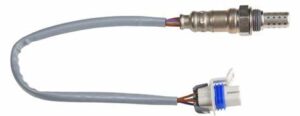
Most people consider avoiding an O2 sensor to be a temporary solution or a last resort. These are the methods:
Locate the O2 Sensor: Locating the faulty O2 sensor is the first step. There are typically two types of vehicles: upstream, which is before the exhaust system, and downstream, which is after the exhaust system. For guidance, use terms like “O2 sensor area” and “upstream versus downstream O2 sensor.”
Carefully remove the O2 sensor from its saddle in order to disengage it. Take caution not to damage the wiring. Lookup phrases such as “O2 sensor wiring tackle” and “how to disengage O2 sensor” can provide step-by-step instructions and advice.
Presenting a Resistor Purchase a resistor that corresponds with the calculations anticipated to replicate the sign of the O2 sensor. Integrate the resistor into the connector of the sensor. This step is often referred to as “reenact O2 sensor signal” or “O2 sensor resistor sidestep.”
Protect the Associations: Ensure that every association is protected from moisture and debris. For additional protection, use intensity shrivel tubing or electrical tape. For additional safety advice, turn up “safeguard O2 sensor wiring” and “secure O2 sensor sidestep.”
Check the Framework: Make sure the check motor light is off by turning on the motor. The detour proved beneficial, assuming the motor operates as intended and the light components are turned off. To confirm the cycle, people frequently search for “test O2 sensor sidestep” and “check motor light off after sidestep.”
Natural and Lawful Thoughts
It is important to understand that, due to discharge guidelines, it is illegal in many districts to circumvent an O2 sensor. Expected fines and increased unsafe outflows may result from this training. Always check surrounding laws before attempting an O2 sensor sidestep. Common searches related to this angle include “ecological effect O2 sensor sidestep,” “discharges test O2 sensor,” and “O2 sensor sidestep lawfulness.”
Alternatives to Getting Around the O2 Sensor
Instead of avoiding, think about alternatives like replacing the defective O2 sensor or using an excellent O2 sensor test system. These decisions can restore proper motor function without violating discharge guidelines. For more information, look up “O2 sensor replacement,” “best O2 sensor test system,” and “O2 sensor investigating.”
By being aware of the By understanding the importance of the O2 sensor and the consequences of ignoring it, you can make well-informed decisions regarding maintaining the appearance of your car and adhering to natural laws.
1.1 – Disconnect the Battery
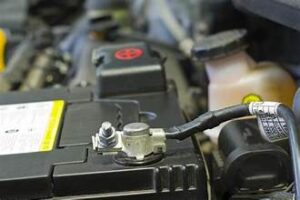
Disengaging the battery is an essential safety precaution when working on your car. It prevents unintentional electrical shorts and protects you and the electronics in your car. Look for the battery in your motor sound first. To undo the nut on the adverse terminal, you’ll need a wrench. Always disconnect the negative terminal first in order to avoid sparks.
People often describe this cycle with terms like “disengage battery terminal,” “remove car battery,” and “battery safety precautions.” Remember to carefully lift the link off the terminal and secure it away from the battery after loosening the nut to ensure it doesn’t accidentally reconnect. For safe car maintenance, the battery must be properly detached.
1.2 – Jack up the Car
For certain vehicle maintenance tasks, raising the car is a basic tactic. Choose a level, stable surface first to prevent the car from slipping. Make sure the vehicle jack is under the designated jacking focuses and use a sturdy one. Terms such as “lifting a vehicle,” “vehicle support,” and “vehicle jack wellbeing” are commonly used by people. Start by slowly pumping the jack handle until the car is at the desired height.
For extra security, it is essential to place jack remains underneath the car. Never rely on the jack alone. Accurate vehicle lifting is necessary for safe and practical vehicle repairs.
2 How to Bypass Oxygen Detector With an Oxygen Sensor Extender

An oxygen sensor extender can help prevent check motor lights caused by exhaust system problems by avoiding the oxygen locator. Locate the oxygen sensor in your car first; it’s usually next to the ventilation system. Common phrases include “check motor light fix,” “bypass O2 Sensorspacer,” and “oxygen sensor sidestep.” Remove the oxygen sensor carefully with a fitting wrench.
Attach the oxygen sensor extender, also known as a spacer, to the specific area of the sensor. The oxygen sensor should then be screwed into the extender. This configuration modifies the sensor readings to fool the car’s PC. Make sure the extender is always securely fastened to prevent spills from exhaust. In certain cases, using an oxygen sensor extender can be a successful solution related to discharge problems.
3 How Can You Make Your Own Dummy O2 Sensor?
One way to avoid checking motor lights is to recreate a functioning oxygen sensor by making your own faker O2 sensor. Begin with the necessities for a social gathering: a resistor, a flash fitting non-fouler, and basic hand tools. Common phrases include “O2 sensor test system,” “sidestep check motor light,” and “sham O2 sensor Do-It-Yourself.” To fit the bypass O2 sensor, first drill out the flash attachment non-fouler.
To make the electrical sign mirror, incorporate the resistor into the sensor wiring. Attach the modified non-fouler to the sensor’s designated location in the exhaust system. To ensure that the spurious sensor remains associated, secure the setup. Creating a fake O2 sensor is a clever way to address sensor-related problems without replacing expensive components
4 How to Bypass 02 Sensor Heater Circuit?
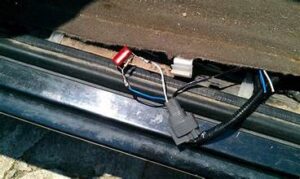
It is possible to identify the diligent check motor lights associated with the sensor’s radiator glitch by evading the O2 sensor warmer circuit. Locate the Bypass O2 Sensor and its wiring saddle first. Popular expressions include “check motor light arrangement,” “oxygen sensor circuit fix,” and “bypass O2 Sensor radiator sidestep.” Separate the warmer wires from the transmission wires, as they should normally be.
To replicate the typical behavior of the sensor, connect the radiator circuit using a resistor. To prevent shorts, secure the connections with electrical tape or intensity contract tubing. Through this trick, the PC in the car may be led to believe that the warmer is functional. For problems relating to warmers, it may be convenient to circumvent the O2 sensor radiator circuit.
5 How To Delete O2 Sensors from ECM
Check motor lights that are diligent can be identified by circumventing the O2 sensor warmer circuit. Unwanted error codes can be eliminated by wiping the O2 sensors from the Motor Control Module (ECM). Start by using an OBD-II scanner or tuning programming to access the car’s ECM. “Bypass O2 Sensor erase,” “ECM reconstructing,” and “oxygen sensor evacuation” are examples of common terms.
Proceed to the section that regulates the oxygen sensors. Modify the settings or boundaries to make the sensors less effective. By doing this, the O2 sensor signals will be removed from the framework and the ECM will be prevented from checking them. Make sure to transfer the modified settings to the ECM and save them. Erasing Bypass O2 Sensor from the ECM is a sophisticated workaround for problems involving sensors.
6 How Can You Trick the Oxygen Sensor After Removing Cat?
Avoiding check motor lights is often achieved by deceiving the oxygen sensor after the exhaust system has been removed. First, add an O2 sensor spacer, also known as a “faker” sensor, which alters the exhaust stream to trick the sensor. As much as possible, Bypass O2 Sensor is used in phrases like “bypass O2 Sensor spacer,” “exhaust system evacuation fix,” and “sensor stunt.” By removing the sensor from the direct exhaust stream, these spacers reduce the likelihood of error codes. Conversely, make use of an electronic test system designed to mimic the typical sensor signals. Proper setup ensures that the exhaust system is fooled into believing it is still in operating condition by the ECM. These tricks help prevent problems with execution and dashboard notifications after to get rid of the cat.
7 What Is an O2 Sensor Eliminator and How Does It Work?
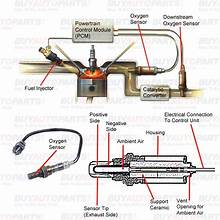
An oxygen sensor eliminator is a device designed to circumvent or fool the oxygen sensor located within the exhaust system of a car. Common phrases include “sensor sidestep,” “O2 sensor eliminator,” and “check motor light fix.” It operates by mimicking the symptoms of a functioning bypass oxygen sensor, tricking the ECM of the car into believing that the oxygen sensor is in good working order.
This device usually uses electronic hardware or resistors to replicate the standard voltage readings. You prevent the ECM from identifying sensor disappointments or exhaust system problems by using the eliminator in place of the first O2 sensor. After adjustments or fixes, an O2 sensor eliminator aids in maintaining performance and preventing dashboard error lights.
8 Conclusion
In summary, evading an oxygen sensor is a specific task that should be approached cautiously. It entails being aware of the vehicle’s emissions control system, setting up a test system precisely, and ensuring that any modifications adhere to local regulations.
Although turning off a bypass O2 sensor can occasionally temporarily fix problems or stop a check motor light from coming on, this is not a very long-lasting solution and could lead to increased discharges and possible problems with motor function. It is always advised to speak with a qualified repairman about the primary cause of Bypass O2 Sensor problems and consider long-term, earth-capable solutions.
FAQs
1. What is an O2 sensor, and for what reason is it significant?
An O2 (oxygen) sensor is a part in your vehicle’s exhaust framework that screens how much oxygen in the exhaust gases. It assumes an essential part in keeping up with ideal motor execution, eco-friendliness, and diminishing discharges by guaranteeing the right air-fuel blend.
2. How could somebody need to sidestep an O2 sensor?
Bypassing an O2 sensor is regularly finished to evade issues brought about by a flawed sensor, stay away from expensive substitutions, or change the vehicle’s presentation. Nonetheless, it’s essential to take note of that this training is for the most part not prescribed because of potential lawful, ecological, and motor execution suggestions.
3. Is it legitimate to sidestep an O2 sensor?
In many districts, bypassing an Bypass O2 Sensor is unlawful as it can prompt expanded discharges, disregarding ecological guidelines. It is in every case best to actually take a look at nearby regulations and guidelines prior to endeavoring any changes to your vehicle’s discharge control frameworks.
4. What are the normal techniques to sidestep an O2 sensor?
O2 Sensor Spacer: This is a mechanical fix that includes introducing a spacer between the O2 sensor and the exhaust stream to fool the sensor into perusing lower outflows.
Electronic Test system: This includes utilizing a gadget that impersonates the sign of a working O2 sensor to trick the vehicle’s PC.
Programming Tune: Some post-retail tuning arrangements can debilitate the O2 sensor’s contribution to the vehicle’s ECU.
5. What are the possible dangers of bypassing an O2 sensor?
Bypassing an Bypass O2 Sensor can prompt a few issues:
Expanded Emanations: The vehicle might deliver more hurtful outflows, adding to ecological contamination.
Motor Execution: The motor may not run as effectively, prompting diminished execution and mileage.
Legitimate Results: There might be lawful repercussions for messing with discharge control frameworks, including fines and bombing vehicle assessments.





